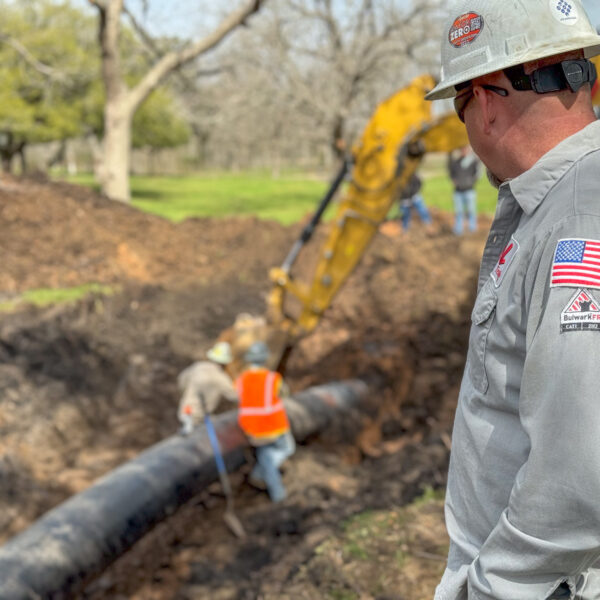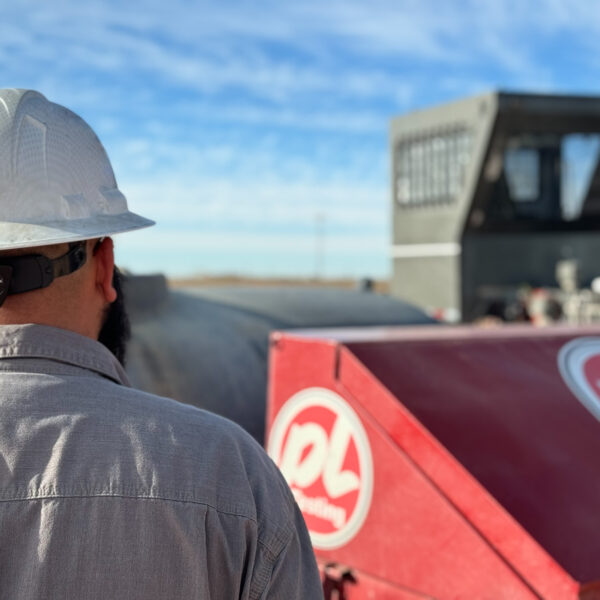Requalifying pipelines for service is often a routine process for midstream asset owners, and selecting the right integrity service provider ensures timely success. What initially looks like a standard project could turn into a multiphase undertaking, including excavation, leak detection, and segment repairs.
There are multiple scenarios that drive requalification. Many of which have to do with the PHMSA MegaRule regulations around HCA transmission lines. These requalification requirements are driven by certification periods depending on defect identifications. Operational changes, including design pressure changes and leaks, are additional reasons for requalification.
In a recent project, PL Testing successfully completed a pipeline requalification for a midstream energy company. This project requalified a dormant asset—30,000 feet of 16-inch pipeline—to reenter service. The requalification allowed the asset owner to transport gas from a new well into a sales line.
In the following section, we’ll walk you through the three main phases of the asset requalification process, and how a midstream energy company successfully requalified a dormant asset.
Phase 1: Initial Pipeline Assessment – Appurtenance Inspection, Proving Run and Cleaning
Even though this type of project is common, each pipe can have a different set of anomalies. An initial assessment can give vital details about the pipeline and its unique anomalies.
Upon initial inspection of the dormat asset in this project, the launcher and receiver doors were nonfunctional and required replacement. A local contractor was easily contacted and brought into the project by PL Testing to perform mechanical repairs. PL Testing then performed a proving run to ensure the pipeline was unobstructed for pigging, and around 1000bbl of water and oil residue were removed from the line. Even though this purge was unexpected, PL Testing was prepared and transferred this fluid into onsite storage for disposal. After the fluids were removed, PL Testing continued with chemical and mechanical cleaning activities, ultimately preparing the asset to a state of cleanliness for future use.
Phase 2: Hydrostatic Testing, Failure Site Identification, Repair
Hydrotesting is an important method for maximum allowable operating pressure reconfirmation. In this project, hydrotesting allowed failure points to be identified and repaired.
To begin hydrotesting, the pipeline was filled with fresh water for testing. This asset requalification endured multiple ruptures, with logged failures prior to a successful test. Leaks can take time to identify, both from pressure interpretation and failure locating.
After locating the failure points, the sites were excavated and segments replaced. Customer and code standards were used for the mechanical work. Following segment repairs, PL Testing achieved a successful pressure test, satisfying 49 CFR 192 criterion.
Phase 3: Dewater, Dehydrate, Recommissioning Services
A primary concern with hydrotests can be the unforeseen negative consequences of introducing water to your assets. In Phase 3 of requalification, great care and attention is given to make sure that the line is dehydrated to specifications, so the asset may be returned to service safely.
After hydrotest approval, test water was removed from the pipeline and hauled to a strategic disposal well. After dewatering, the pipeline was swabbed with low-density foam and dry air to achieve customer dust penetration requirements and finally dehydrated to dewpoint specification.
Plan For The Unknown
Upfront planning and project management are crucial to prepare for asset requalification. Issues can always pop up, but planning can tackle what is preventable, so more resources can be dedicated to truly unexpected challenges. Outside of planning, investing in experienced and expert personnel can help give insight into solving the unknowns, as they can draw on past experiences and critical thinking to react. Skip learning the hard way and lean on those with years of experience to help with your project.
Contact PL Testing to learn more about asset requalification.



